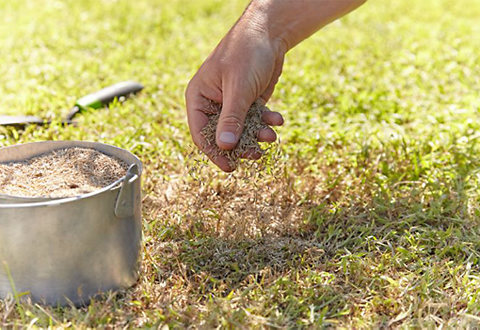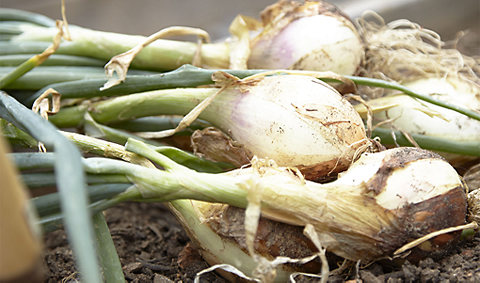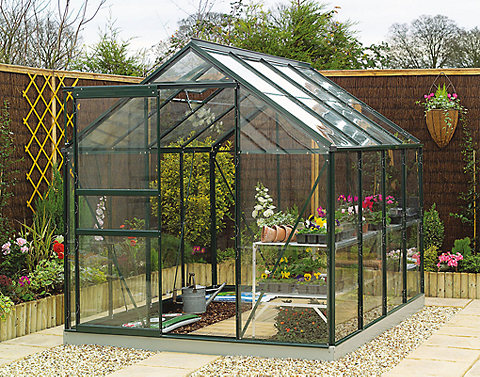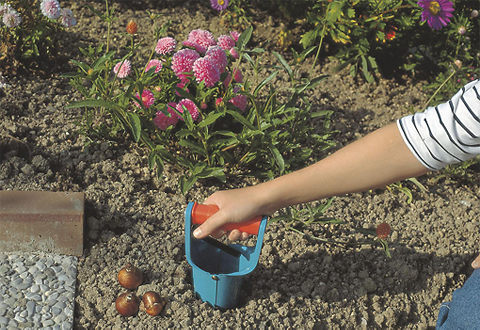Christmas clearance has landed! Click + Collect selected items in just one hour. Shop now >>
September gardening jobs
Tips and advice on garden care in September
The summer is coming to an end, but your garden can still give you plenty of pleasure as the nights draw in.
Before the warm days are gone for another year, get outside and make the most of all the good work you’ve done in your garden over the last few months. We also recommend giving your garden a tidy at this time of year.
- What to do in your garden in September
- Lawns
- Trees, shrubs, and climbers
- Flowers
- Patios and containers
- Vegetables and herbs
- Fruit
- Under cover: greenhouses and growhouses
- Ready your lawn for cold weather
- Plant winter bedding and spring-flowering bulbs
- Clear fallen leaves
- Support trees and climbers
- Bring in the Autumn harvest




What to do in your garden in September
- Keep watering and deadheading
- Cut out faded flower stems to keep borders tidy
- Get the compost going - autumn generates a lot of waste
Lawns
- Once the dry weather comes to an end, scarify and spike the lawn, and apply autumn lawn feed.
- Repair broken edges and attend to bald patches, bumps and hollows
- Make new lawns from seed around the middle of the month (lay turf through to November)




Trees, shrubs and climbers
- Plant and move conifers and evergreens
- Deadhead roses
- Give fast-growing privet hedges their final cut of the year
Flowers
- Plant spring-flowering bulbs, but store tulips and hyacinths until October
- Replace summer bedding with plants for winter and spring and keep them watered
- Deadhead dahlias
- Support tall flowers




Patios and containers
- Plant winter bedding and spring-flowering bulbs in containers
- Stop feeding permanent plants growing in containers
- Move tender plants under cover in cold areas
Vegetables and herbs
- Cover late crops of salads and courgettes with horticultural fleece
- Vegetables to sow in September - Sow overwintering onions as well as quick crops, such as baby spinach, for salad leaves
- Harvest marrows, French and runner beans, lettuce, rocket, spring onions, autumn cauliflower, cabbages, pencil leeks, maincrop potatoes, onions and shallots
- Pot up herbs - chives, mint, basil, coriander and parsley




Fruit
- Pick blackberries, the first autumn fruiting raspberries, apples as they ripen and the first Conference pears towards the end of the month
- Prune cane fruits
- You can store undamaged fruit by wrapping it in newspaper and putting in a cool dry place
- Root crops such as carrots, beetroot, parsnips, swedes and turnips can stay in the ground for winter
Under cover: greenhouses and growhouses
- Reduce the watering and feeding of all greenhouse plants
- Bring in tender plants to overwinter in cold areas
- Plant spring-flowering bulbs in pots
- Sow hardy annuals for early spring flowers in an unheated greenhouse or conservatory
- Stop feeding and reduce the watering of tomatoes, peppers, aubergines and cucumbers




Ready your lawn for cold weather
First mow the lawn then rake out any moss and weeds. Mow the lawn a second time, this time mowing at right angles to how you did it last time, that way you’ll cut off all the creeping grasses and weeds raised by raking. Then spike it over to get the air into it and alleviate compaction. Either use a garden fork, stabbing it down about 8-10cm, or use a lawn aerator.
Feed the grass with a good autumn formula lawn feed - don’t go thinking you can just use up your spare spring lawn feed as it isn’t suitable this time of year and may do more harm than good.
Finally, if you’ve got clay, chalky or sandy soils it’s a good idea to top dress the lawn. Only put on a very thin layer of top dressing at a time though – if you bury the grass you will kill it.
For more seasonal lawn care tips, head to our helpful guide.
Plant winter bedding and spring-flowering bulbs
Clear out any summer bedding plants from beds, borders and containers as they reach the end of the road.
Now you have created a space you can prepare to plant up winter bedding. Fork over the areas, working in some well-rotted organic matter, and then transplant winter bedding into the gaps. Make sure the plants are kept well-watered whilst they find their feet.




Clear fallen leaves
Don’t delay clearing leaves until the end of autumn – if left on your lawn for long periods, they'll reduce the amount of light that reaches the grass and make it turn yellow. Avoid this by clearing the leaves frequently, a little at a time.
A lawn rake is fine for large, flat areas of lawn but impractical for borders, so consider investing in a garden vacuum. If you use it on shredder mode, the leaves will rot down much more quickly when composted – add them to your compost bin in thin layers along with other organic matter.
Did you know you can make your own soil conditioner from your fallen leaves? Take a look at our guide on making your own leaf mould.




Support trees and climbers
Trees
Autumn brings strong winds, so give newly-planted trees all the support they need by staking them. This will prevent rocking damage, which can uplift and destroy their root anchorage, or even cause them to snap.
Instead of using a single, vertical stake, we recommend an angled one. This will allow the tree to move in the breeze instead of staying totally rigid - ideal as swaying has been proven to promote trunk growth.
Climbers, clematis and climbing roses
These all need a frame to grow up when they put on new growth in the spring, and it’s often easier to erect the structure now, as they've reached the end of their growing season. Frames come in different shapes, which define the direction that your plants grow in.
Bring in the autumn harvest
Continue to harvest and enjoy plenty of delicious homegrown vegetables, such as onions and shallots, French and runner beans, salad crops, spinach, cabbages and more. September marks the last month for sowing any outside seeds, so be sure to get any last radish or lettuce seeds planted before the weather gets too cold.
Late crops of salads, courgettes or any other plants that are still in the ground should be covered with horticultural fleece. Leave tomatoes on the plants until the end of the month – then pick all remaining fruit and bring them indoors to ripen on a windowsill.
When it comes to fruit, you can start picking the first autumn-fruiting raspberries, as well as tree fruits like apples and Conference pears (these will be ready towards the end of the month). Be sure to harvest these as they ripen. To find out if apples and pears are ready to be picked, gently twist a fruit growing on the tree. If the fruit comes away easily, it's ready.









